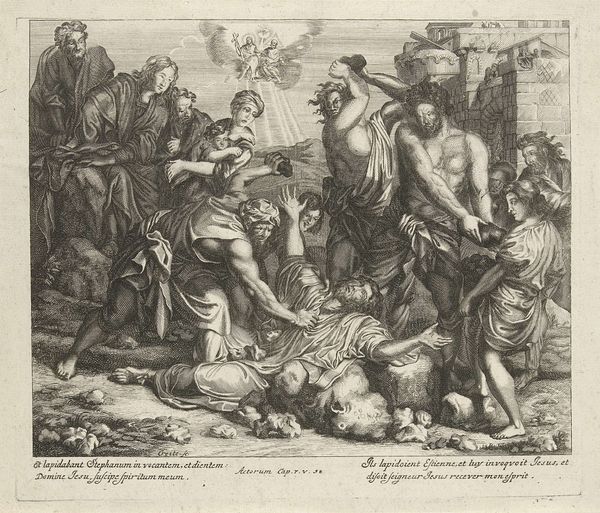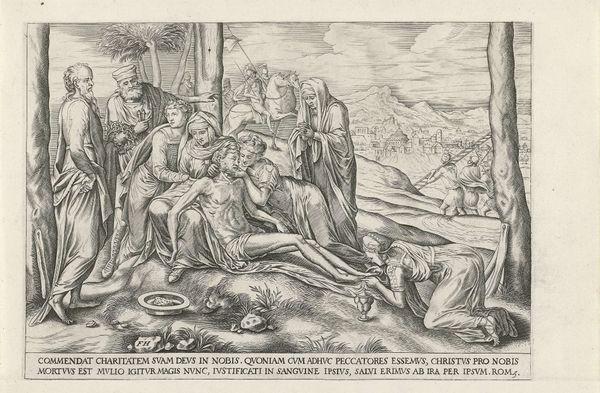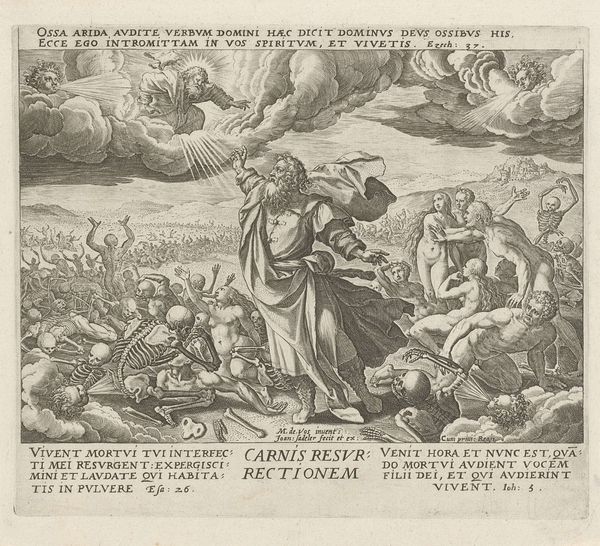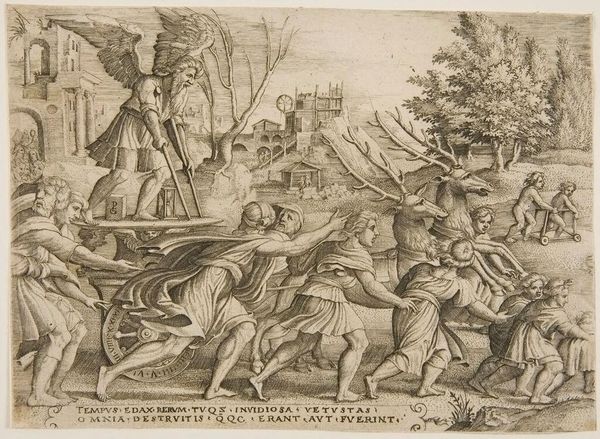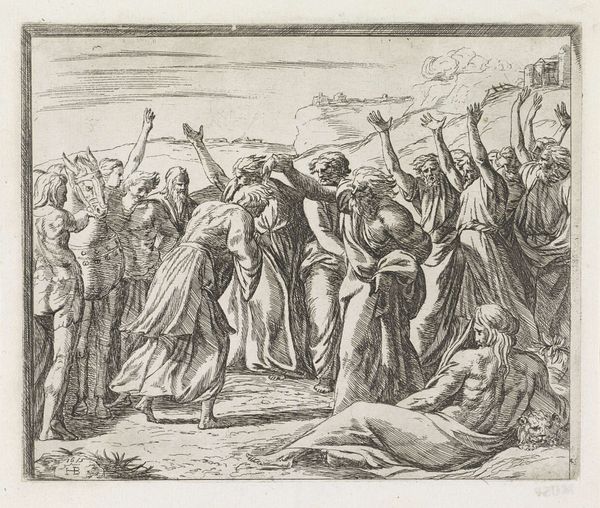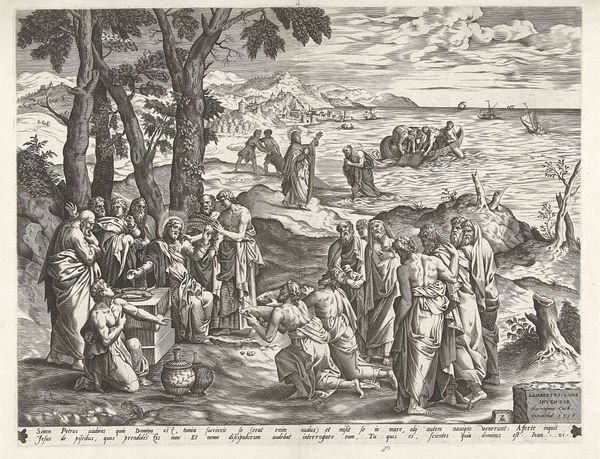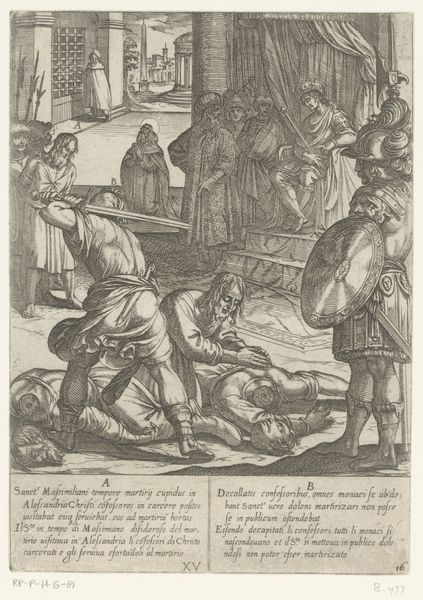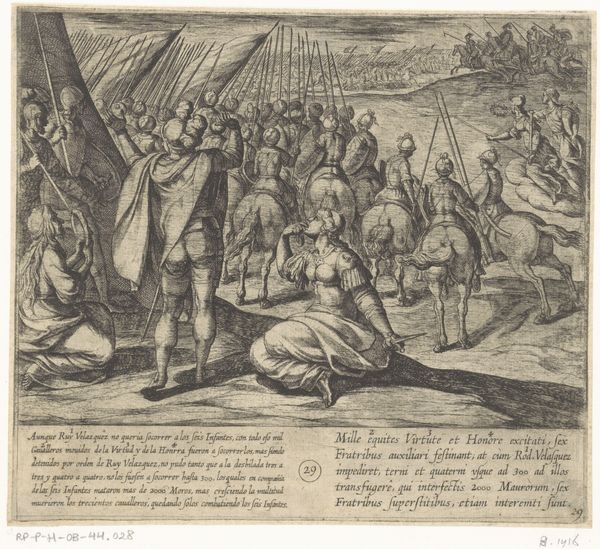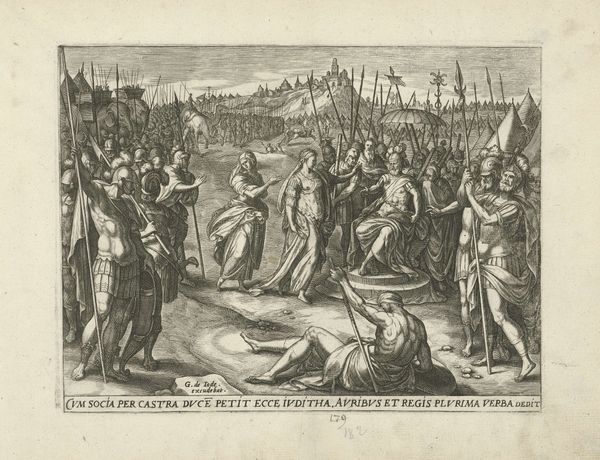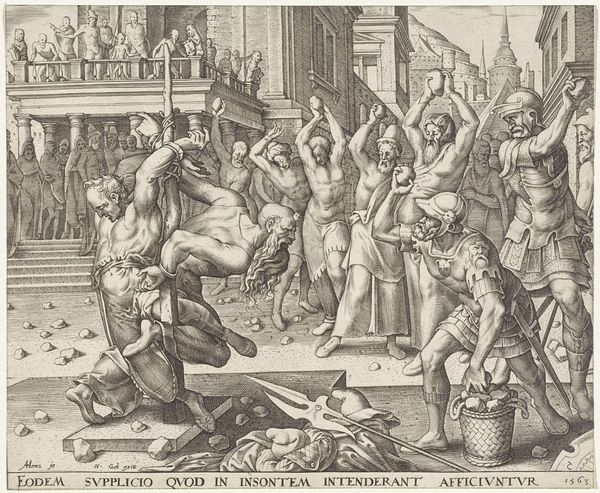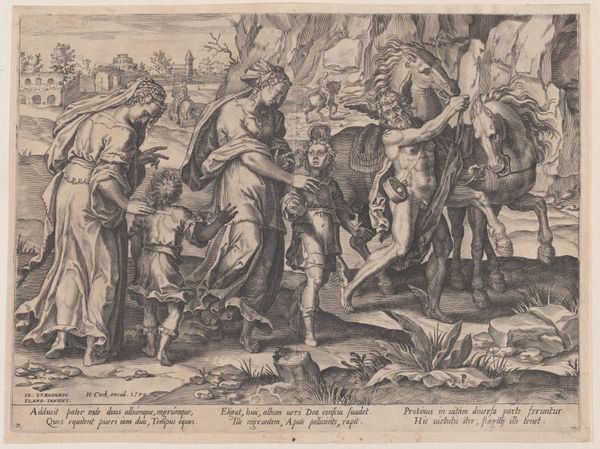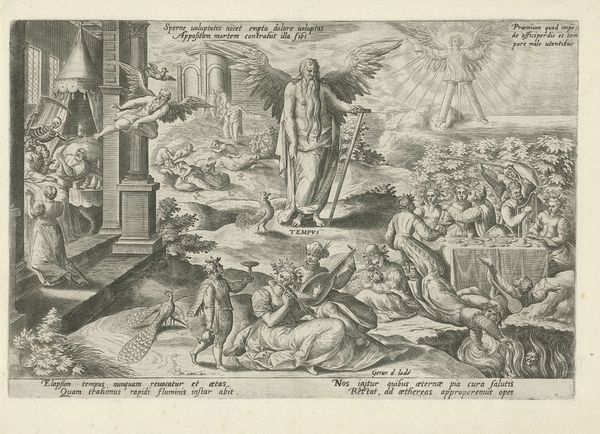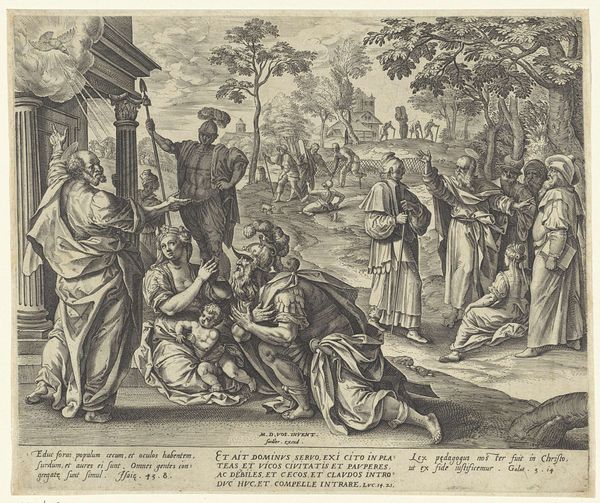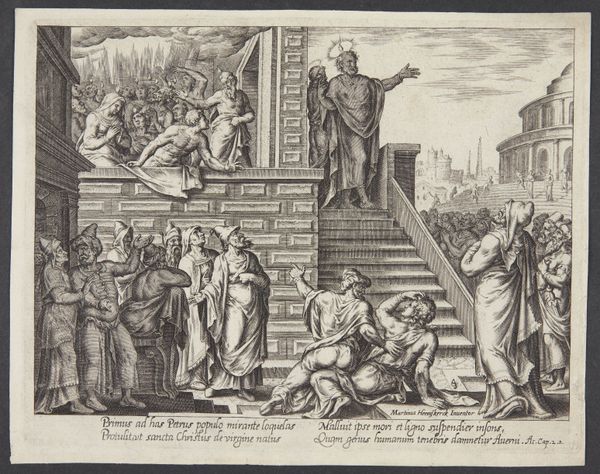
Bewening van Christus: 'die geleden heeft onder Pontius Pilatus, is gekruisigd, gestorven en begraven' 1579
0:00
0:00
johannsadeleri
Rijksmuseum
print, intaglio, engraving
# print
#
intaglio
#
old engraving style
#
figuration
#
11_renaissance
#
history-painting
#
engraving
Dimensions: height 202 mm, width 239 mm
Copyright: Rijks Museum: Open Domain
Curator: This engraving, "Bewening van Christus: 'die geleden heeft onder Pontius Pilatus, is gekruisigd, gestorven en begraven'" or "The Lamentation of Christ," was created by Johann Sadeler I in 1579. It depicts a profoundly human scene following the crucifixion. Editor: My immediate sense is one of somber, muted grief, very characteristic of Northern Renaissance prints. The dense figuration and use of line to denote texture and shadow are quite striking. I'm especially drawn to the materiality implied in Christ's body. Curator: The composition underscores the suffering endured under Roman authority. Note how the arrangement centers Christ's body, drawing the eye to his wounds and the expressions of mourning etched onto the faces of those surrounding him. The women present a particularly moving image of lamentation. Editor: Absolutely, and it’s worth noting the tools scattered in the foreground—a hammer, nails. These become tangible reminders of the brutal labor and instruments of his suffering. They bridge the religious narrative and the reality of physical torture and exploitation. Curator: Beyond the overt religious theme, one can interpret this piece through the lens of power structures, focusing on the marginalized and those who suffer under political oppression. The women are especially important, showing that they are present at such important moments of this historical account. Their role as both grievers but also primary caretakers is central to this event. Editor: Precisely! And beyond the representation, we also should look at Sadeler's material practice. Intaglio engraving involves immense skill and labor, underscoring the dedication in disseminating these images. This wasn't just devotional art; it was a crafted, reproducible message circulating within specific social networks. Curator: Examining the political and social context informs how we read not only the image but the role of visual media during the late Renaissance and the role that religious propaganda took during that period. The message reinforces faith but also speaks volumes about resistance and resilience amid political unrest. Editor: I see it as a reflection of both spiritual devotion and material engagement with social realities, deeply entrenched in its own historical moment. Thank you for helping me see it that way, by reflecting on how art shapes power dynamics within a religious context. Curator: Thank you. Highlighting these elements shows just how profoundly artworks can function as barometers of cultural attitudes, labor practices, and tools of dissemination during pivotal moments in time.
Comments
No comments
Be the first to comment and join the conversation on the ultimate creative platform.
